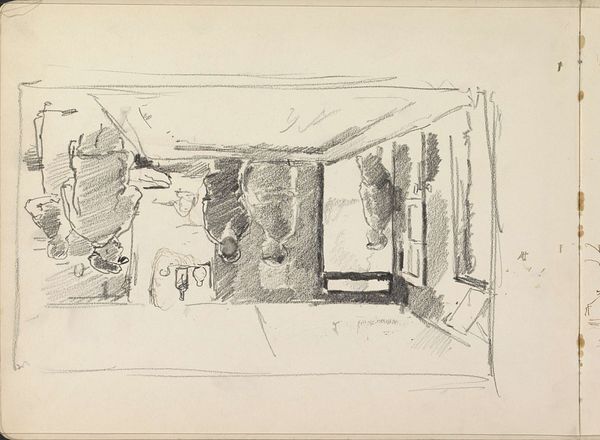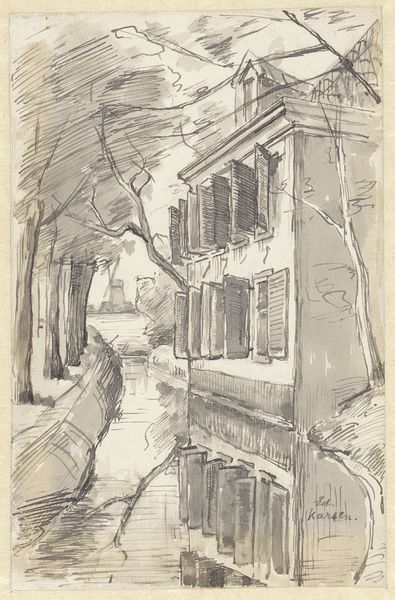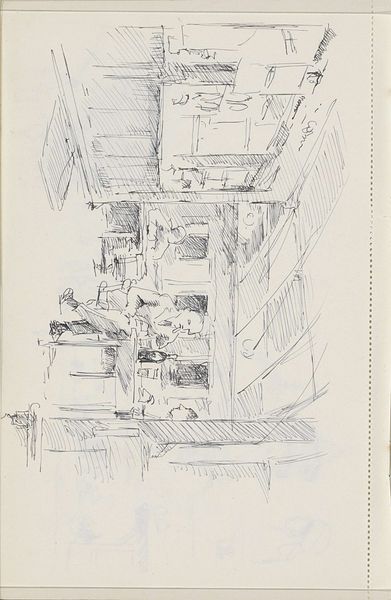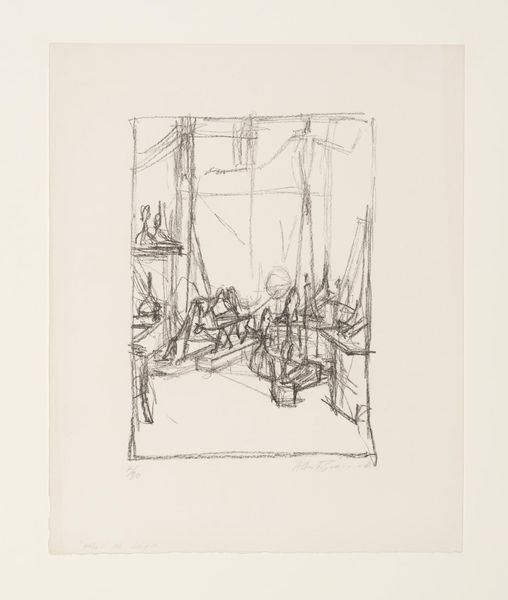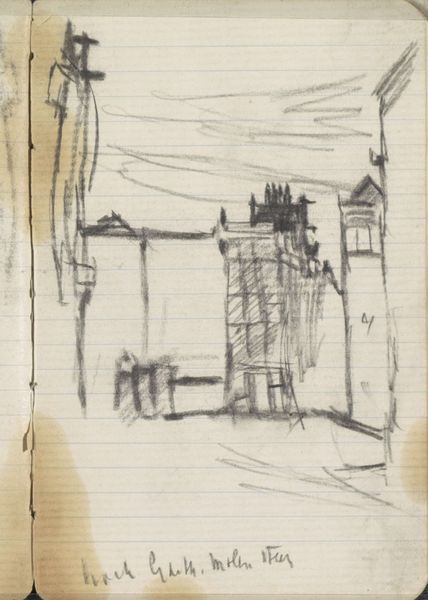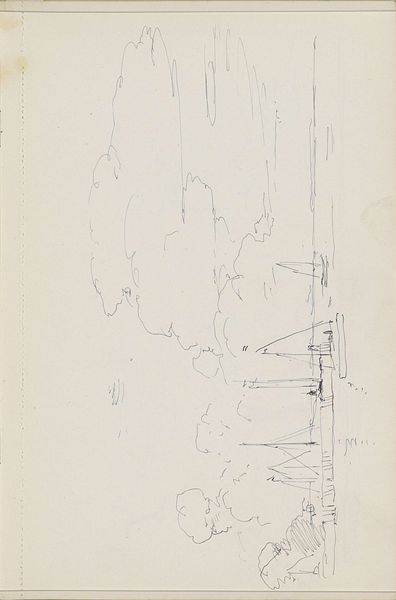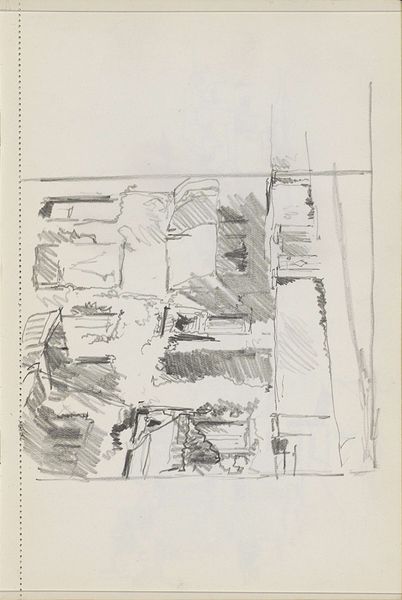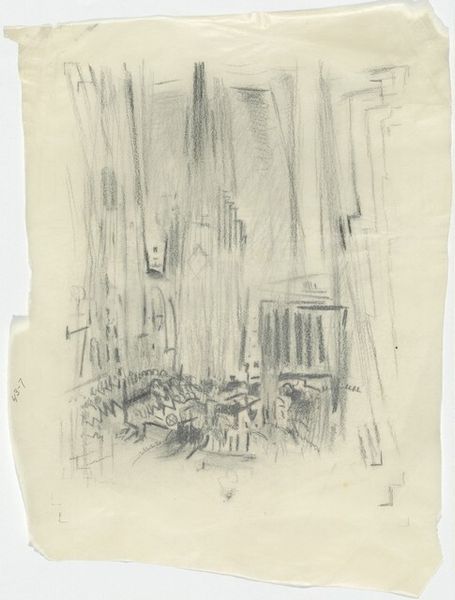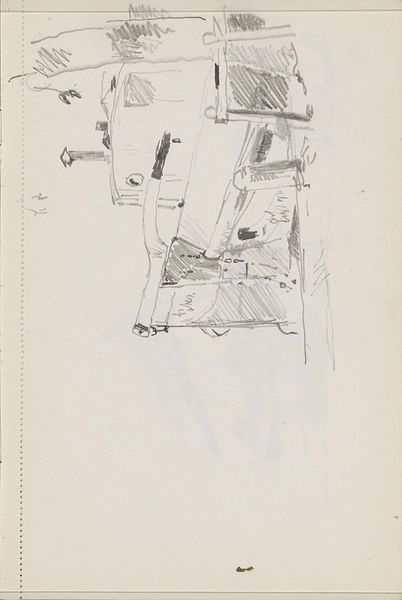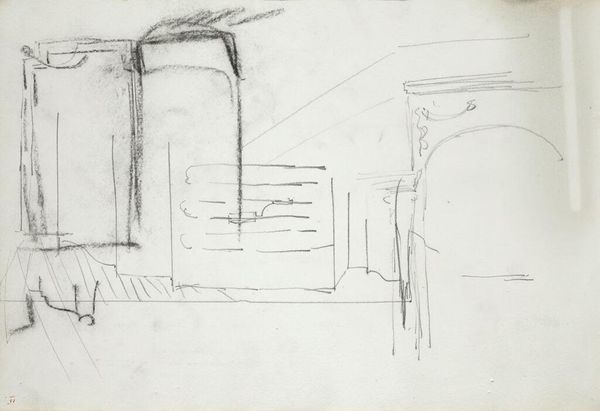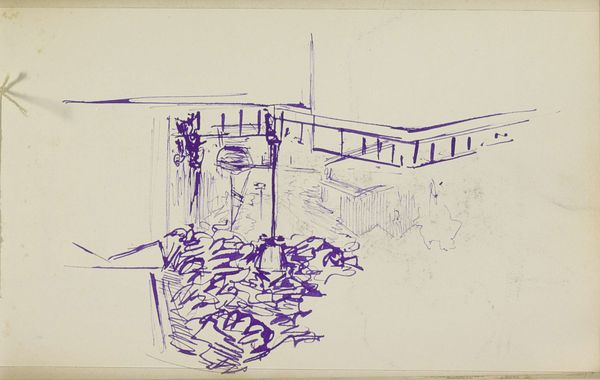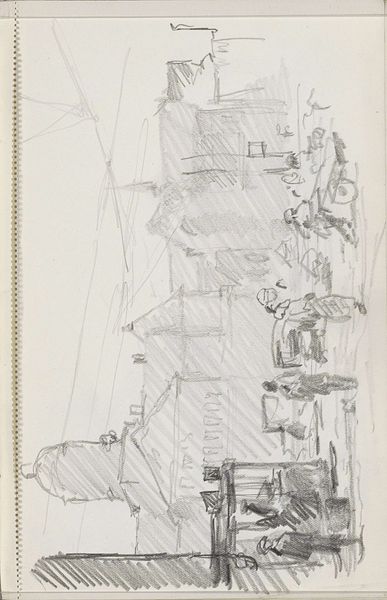
Dimensions: overall (approximate): 38.7 x 28.2 cm (15 1/4 x 11 1/8 in.)
Copyright: National Gallery of Art: CC0 1.0
Curator: Allow me to introduce "Robert Lee's Workshop," a watercolor drawing possibly enhanced with etching by David Young Cameron, created around 1905. Editor: Immediately, I'm struck by how unfinished it feels, like a memory fading at the edges. The central black space contrasted with the sparse application of color and tentative lines creates an ominous mood. Curator: It's tempting to see the incomplete nature of this workshop as a reflection of labor itself—always in progress, always provisional. Notice the bare construction, the provisional carpentry that both structures and obscures the internal darkness of this place. It’s the material support for possible making. Editor: Interesting observation. I'm seeing this black space as a sort of primal void, from which all creation arises. The ladder propped up seems to suggest a connection between the earthly and the divine, a pathway to creation. Do you think this depiction reveals something about the cultural attitude towards workshops during this era? Curator: I think you’re correct about the time influencing this drawing, though I find more interest in how the composition forces the eye upwards—from the workbench to that central ladder you noted, and then beyond into the implied labor happening out of sight, somewhere above and outside this room. This space is so indicative of early 20th century tradesmen shops in England at this time. Editor: I concede the eye is forced upward! But the workbench at the bottom suggests a connection to material grounding. The ladder remains a central emblem. This ladder leads upward to creation and illumination. It represents the craftsman's ambition, connecting manual work to aspirations for artistry. Curator: Perhaps. I still see the drawing emphasizing process rather than the product. I'm less drawn to symbolic ladders, but the drawing materials employed and the depiction of wood suggests the constant consumption that accompanies industrial production in Scotland in the early 1900's. Editor: I think we can agree on the inherent human ambition apparent within Cameron's drawing, no matter how you parse it: whether we look for ladders of transcendence, or consumption for industry. Curator: Precisely. And whether approached as a spiritual statement or a reflection of socioeconomic practices, this drawing still stimulates debate today.
Comments
No comments
Be the first to comment and join the conversation on the ultimate creative platform.
